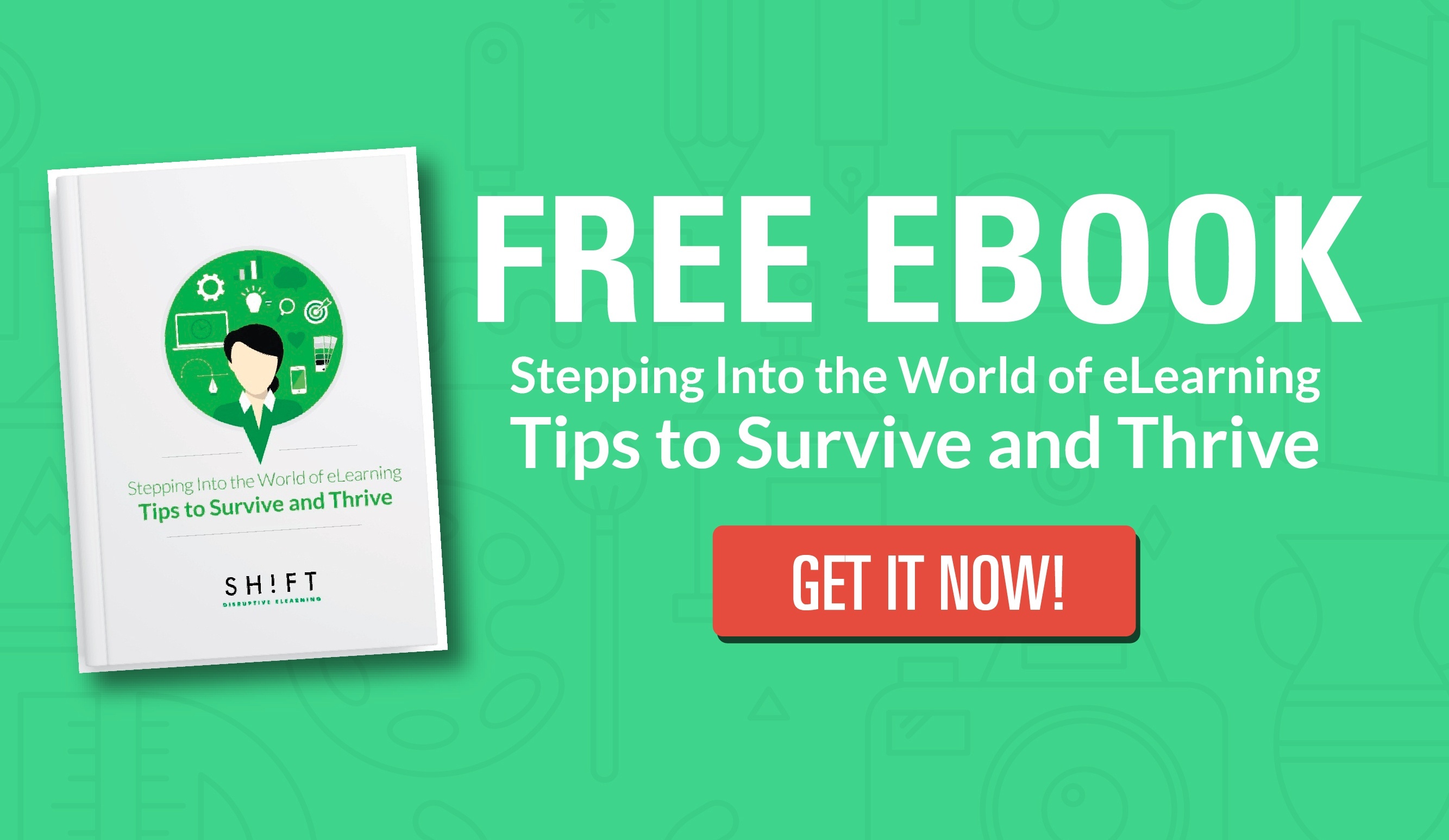Sometimes it feels like your eLearning courses haven't been updated since the 90s. Often, your courses look remarkably similar to the ones you made five years ago. This sense of timelessness can easily bore your learners and actually take away from the impact of the course content.
How can you make your eLearning courses more innovative? How can you adapt them to modern learners' needs and spice them up? Most importantly, how can you redesign them and create transformative experiences that actually engage your learners?
Continue reading!
The Problem with Old and Outdated eLearning Courses
eLearning courses that have been created several months or years ago can be a burden for organizations. Most of them do not take advantage of the latest technological trends, are not designed to be visually attractive, do not adapt to new employee needs, and do not address the latest trends in the world of organizational learning. Outdated courses can cause an unattractive learning experience, increase dropout rates, and decrease student satisfaction.
Not renewing and updating eLearning courses with some frequency can have a negative impact on companies. A poor learning experience can decrease employee motivation, which in turn will affect their ability to correctly apply learned skills and knowledge. This could affect the organization's ability to attract and retain talent.
Here are some tips to revamp your eLearning courses and engage your learners:
1) Play with Typography
Who says text has to be boring? Play a little and have fun with typography.
Text can have a significant impact on the appearance and effectiveness of your eLearning courses. By making simple changes like changing the size or color of the letters, you can give your texts a renewed and attractive look.
Here are some tips to achieve it:
-
Avoid very small font sizes: Pay attention to the font size. If you have to squint and strain your eyes to read what's on the screen, make it bigger.
-
Illegible fonts: Cursive fonts are attractive, but too many curls and twists make the text illegible.
-
Play with font-size: Use different font sizes to emphasize important information or make certain parts of the text stand out.
-
Add contrast: Use contrasting colors to make the text more readable and easy to read. This can also make the text more visually appealing.
-
Use bold: Use bold and italics to highlight keywords or important phrases in the text. This will make the text easier to read and help employees retain information.
-
Create a style guide: Experimenting with typography and colors is very fun. But don't go crazy and create a mess with too many fonts and many different styles. Try to maintain a structure and document everything in a style guide.
Remember that typography can have a big impact on the appearance and effectiveness of your eLearning courses. By playing with the size, color, and font of the text, you can give your courses a renewed and attractive look that will keep employees engaged and motivated.
2) Improve the Visual Appeal of the Course Screens
Visually updating your old eLearning courses can be a big step in making them more attractive and effective. One way to do this is by visually playing with screens.
Here are some practical tips to do it:
-
Update images: If you've been using the same images for years, they're probably outdated and unattractive. Update your images to be more modern and relevant to the content.
-
Add color: Color can have a big impact on the visual perception of your courses. Change the color palette, and give life to the course with vibrant and attractive colors so that the screens are more attractive and stimulating.
-
If necessary, include white spaces: To make the content easier to read and visually appealing. White spaces can also help separate different sections of content and make the course easier to navigate.
The Complete Checklist for the Perfect eLearning Course Design
3) Use Gamification to Boost Engagement and Motivation
Gamification is a powerful tool to increase engagement and motivation in eLearning. By adding game-like elements to your course, you can make learning more interactive and enjoyable for your students.
But how to implement gamification, not for the sake of following a trend, but to really make an impact and engage your workforce?
As an instructional designer, it’s your job to make learning content more engaging while also improving performance. When incorporating game elements, ask yourself “What do I want the learner to be able to do as a result of this game/experience?” Then, design backward from that action towards the starting point of the instruction. This will streamline and focus the process.
If your goal is to increase engagement, gamification can definitely do that. If your focus is on skill acquisition and enhancing performance, you can go beyond gamification and implement cognitive science methodologies too. Create virtual environments that mirror real-life challenges and provide microlearning experiences to support continuous learning.
Here are additional ideas for your inspiration:
-
Give your eLearning course a "marathon" theme and offer a series of small, achievable challenges to reach the finish line.
-
Start with a question or quiz to spark the learner's curiosity from the beginning.
-
Add a timer to a specific task: Putting students under time pressure not only makes the experience more challenging but forces your learner to focus on taking action and solving the problem.
Read more:
4) Use Responsive Design
If you are concerned about the real benefits of staying current with technology advances and modern learner expectations, using responsive design is a great way to do so as your workers are now using multiple devices in the workplace.
Responsive eLearning design (content that works seamlessly on any device) will help a broader population access your courses whenever and wherever they want, increasing engagement as well as letting them truly achieve self-directed learning.
The single most important benefit of responsive design is the ability to deliver performance support to employees on multiple devices at different moments of need. When a learner needs information the most, they are able to access the right information, wherever they are. This flexibility is priceless!
By arming your employees with responsive courses and the right materials at the point of need, you are empowering them, thus increasing their productivity.
5) From Dull to Dynamic: Incorporating Interactive Elements
If you notice that your course has little interaction, adding more interactivity to your eLearning courses is an effective way to renew and liven up the learning experience.
Here are some practical tips for adding more interactivity:
-
Consider including more assessments: Instead of having an assessment only at the end of the module, incorporate short assessments throughout. For example, convert single-choice questions into multiple-choice questions with images to allow people to practice critical thinking and provide immediate feedback.
-
Create immersive scenarios: Instead of removing text-only screens, you can start creating relevant stories and presenting them through immersive scenarios. People are more likely to retain information if they can relate it to a story or realistic scenario.
-
Include examples and practical activities: So that students can apply what they are learning. This can include activities such as simulations, games, or case studies.
-
Use interactive videos: Turn boring videos into interactive ones that allow students to make decisions and see the consequences of their choices.
Make sure the interaction has a purpose: It is important to remember that adding interactivity just for the sake of it is not effective. Before adding any interaction, review that it corresponds to the learning objectives and has a purpose that will contribute to improving the experience.
Interactivity in eLearning: Finding the Sweet Spot with 4 Key Questions
6) Simplify: Convert Large Chunks of Text into Easily Digestible Content
A very effective tip to update your old eLearning courses is to get rid of large chunks of text. Today's learners have a lower attention span and a greater preference for shorter, "bite-sized" information. Large chunks of text are boring. Some people may even feel intimidated and overwhelmed when they see a screen full of text.
Here are some tips to help you visualize the content easily:
-
Provide practical examples adapted to new trends and context: Present practical examples to illustrate the information. Learners will be able to better understand the information if they can apply it to practical situations.
-
Highlight key points: Instead of presenting large paragraphs of text, emphasize key points to summarize the information using infographics, icons, timelines, or mind maps to present data. Learners will be able to grasp the essence of the information more effectively.
-
Divide content into smaller modules: Microlearning is an effective way to break down content into smaller, more digestible pieces. By breaking down the content into smaller modules, you can help learners to focus on one topic at a time, which can improve retention and engagement. Additionally, learners can complete each module in just a few minutes, which is ideal for busy workers who may only have limited time to devote to training.
-
Space the content: Spacing the content means breaking up the information into smaller, more manageable chunks that are easier for workers to digest and retain. This technique is particularly effective in eLearning courses, where learners can easily become overwhelmed by large amounts of information presented in a short amount of time. For example, instead of presenting a 60-minute video that covers an entire topic, you could break the video up into 5-minute segments, each focusing on a specific aspect of the topic. This allows learners to absorb the information in smaller, more focused doses and prevents them from becoming fatigued or disengaged.
-
Analyze the course content and divide it into two categories: the key content that people must learn and the "nice to know" content that is useful but not essential to the course objective. Move the "nice to know" content to downloadable resources, for example, to clean up the main course content and make it easier to digest. This can also help maintain their attention and motivation.
What are you implementing today to bring your outdated eLearning course designs to life? Let us know in the comments below!



